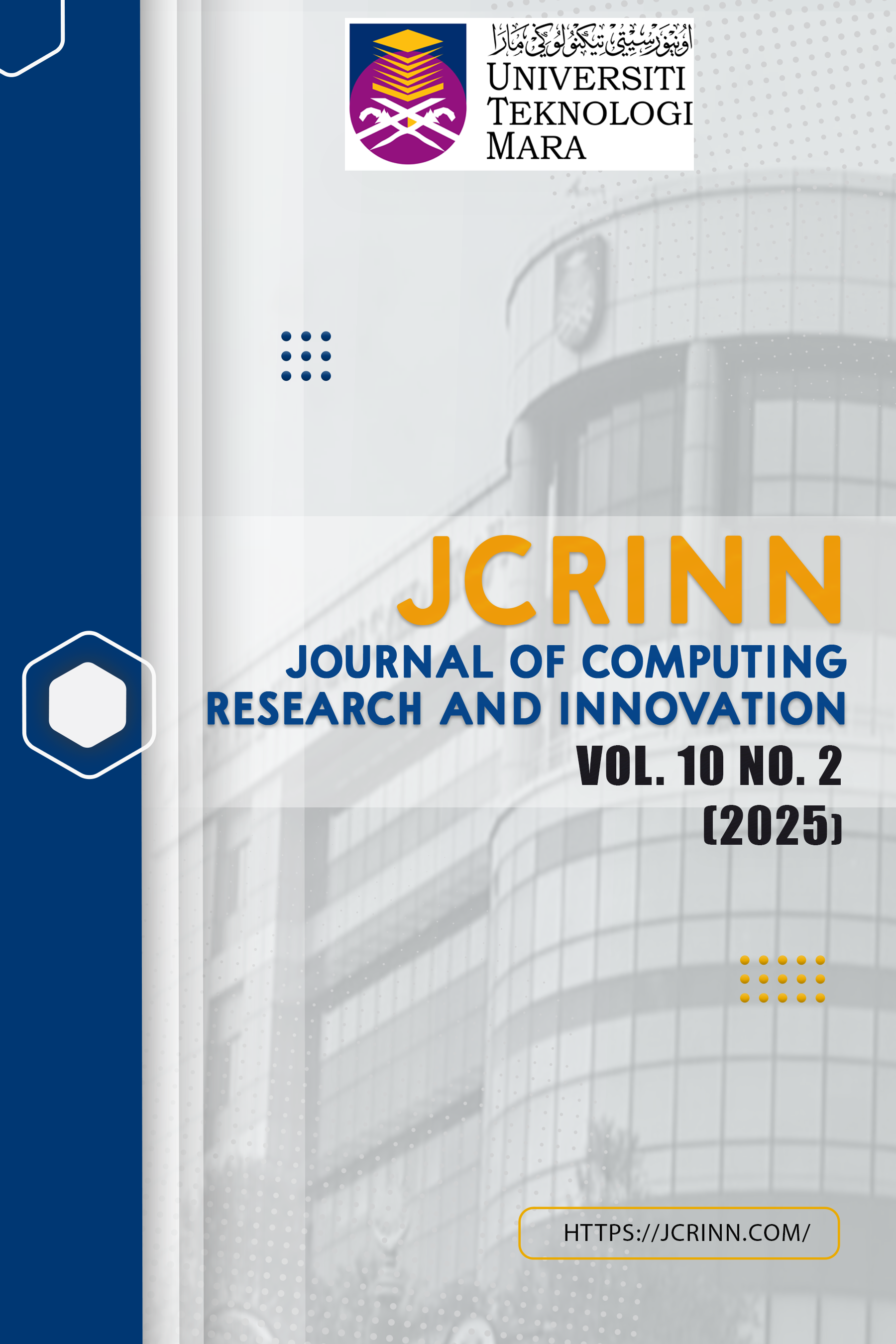PetalsPalette: Blossoming Knowledge by Bridging Technology and Nature through Augmented Reality Learning Application for Flower Identification
DOI:
https://doi.org/10.24191/jcrinn.v10i2.524Keywords:
Flower, Augmented reality, Mobile application, LearningAbstract
This study focuses on learning different types of flowers using augmented reality (AR), which overlays digital content onto the physical environment. Studies regarding flowers or botanical species are complicated by a lack of adequate resources and tools, which puts barriers in place for educators and students who want to engage with the learning content. Current conventional methods of learning are not enough since some of the content may need further visualization of the real species or characteristics. Even though technological tools might be available, without necessary features and resources, particularly for visualization, the use will only be more distracting than helpful. Furthermore, providing an engaging user experience is crucial to ensure that learners effectively absorb the material. Our preliminary investigation has successfully validated the problem statement concerning lack of information and knowledge about flowers, which involves students in UiTM and educators. Thus, PetalsPalette, an AR application, was developed to provide opportunities for learners to learn about flowers through an AR which has been proven effective for learning. Five phases of methodology have been used, namely requirement analysis, design, implementation, testing, and maintenance. In the conducted testing, 33 respondents found that the PetalsPalette application is highly attractive, simple to understand, efficient, dependable, stimulating, and novel. PetalsPalette successfully enhanced flower identification for UiTM students through an AR-based mobile application. Future work aims to improve device compatibility and advance AR capabilities to create more inclusive and adaptable applications.
Downloads
References
Avila-Garzon, C., Bacca-Acosta, J., Duarte, J., & Betancourt, J. (2021). Augmented reality in education: An overview of twenty-five years of research. Contemporary Educational Technology, 13(3), ep302. https://doi.org/10.30935/cedtech/10865
Chamidah, D., Kristianto, S., Sunaryo, Fajarianto, O., Ahmad, A., Ani Setyo Dewi, Y., Sambodja, E., Ambarumi Munawaroh, D., Fitriah, N., & Indriawati, P. (2019). Feasibility of based augmented reality devices discovery learning on students learning outcomes in morphology of Wijaya Kusuma flower epiphyllum anguliger. Journal of Physics: Conference Series, 1175, 012261. https://doi.org/10.1088/1742-6596/1175/1/012261
Derisma, D., & Hersyah, M. (2021). User experience measurement using augmented reality application in learning 4.0. In ICED-QA 2019: Proceedings of the 2nd International Conference on Educational Development and Quality Assurance (pp. 230-240). European Alliance for Innovation.
Kheng, T. K. (2023). Interactive augmented reality aided software for Physics education using exploratory approach. http://eprints.utar.edu.my/6102/
Kim, I., Park, J.-S., & Choi, K.-O. (2020). Analysis of designation and symbolic meanings of floral emblems in South Korea as elements of garden tourism and design. Journal of People, Plants, and Environment, 23(1), 87–99. https://doi.org/10.11628/ksppe.2020.23.1.87
Lam, K. Y., Lee, L. H., & Hui, P. (2021). A2W: Context-aware recommendation system for mobile augmented reality web browser. In Proceedings of the 29th ACM International Conference on Multimedia (pp.2447–2455). ACM. https://doi.org/10.1145/3474085.3475413
Łysiak, G. (2022). Ornamental flowers grown in human surroundings as a source of anthocyanins with high anti-inflammatory properties. Foods, 11(7), 948. https://doi.org/10.3390/foods11070948
Marchenko, А. M., & Kuzovkina, Y. A. (2021). Calculation of the ovule number in the genus salix: A method for taxa differentiation. Applications in Plant Sciences, 9(11–12). https://doi.org/10.1002/aps3.11450
Moesl, B., Schaffernak, H., Vorraber, W., Holy, M., Herrele, T., Braunstingl, R., & Koglbauer, I. V. (2022). Towards a more socially sustainable advanced pilot training by integrating wearable augmented reality devices. Sustainability, 14(4), 2220. https://doi.org/10.3390/su14042220
Mohamad Jamil, P. A. S., Karuppiah, K., Mohammad Yusof, N. A. D., Mohd Suadi Nata, D. H., Abdul Aziz, N., How, V., Mohd Tamrin, S. B., & Naeni, H. S. (2022). Usability testing of a wireless individual indicator system application: monitoring exposure to outdoor air pollution among Malaysian traffic police. Digital Health, 8, 205520762211033. https://doi.org/10.1177/20552076221103336
Narbona, E., Arista, M., Whittall, J. B., Camargo, M. G. G., & Shrestha, M. (2021). Editorial: The role of flower color in angiosperm evolution. Frontiers in Plant Science, 12. https://doi.org/10.3389/fpls.2021.736998
Parsons, T. D., Gaggioli, A., & Riva, G. (2020). Extended reality for the clinical, affective, and social neurosciences. Brain Sciences, 10(12), 922. https://doi.org/10.3390/brainsci10120922
Rajesh Kumar, K., & Subhashini, S. J. (2023). Visualizing medical flowers details by using deep neural network. Recent Developments in Electronics and Communication Systems, 208-215. https://doi.org/10.3233/ATDE221259
Ramli, R. Z., Sahari Ashaari, N., Mat Noor, S. F., Noor, M. M., Yadegaridehkordi, E., Abd Majid, N. A., ... & Abdul Wahab, A. N. (2024). Designing a mobile learning application model by integrating augmented reality and game elements to improve student learning experience. Education and Information Technologies, 29(2), 1981-2008. https://doi.org/10.1007/s10639-023-11874-7
Setiyaningsih, Y., Dijaya, R., & Suprianto, S. (2021). Ethnosciences based augmented reality on botanical garden. JUITA: Jurnal Informatika, 9(2), 173. https://doi.org/10.30595/juita.v9i2.10602
Tonmoy, T. K., & Islam, Md. A. (2023). Do students look for information differently? Information-seeking behavior during the Covid-19 pandemic. Digital Library Perspectives, 39(2), 166–180. https://doi.org/10.1108/DLP-09-2022-0073
Vidak, A., Movre Šapić, I., & Mešić, V. (2022). Augmented reality in teaching about Physics: First findings from a systematic review. Journal of Physics: Conference Series, 2415(1), 012008. https://doi.org/10.1088/1742-6596/2415/1/012008
Wilujeng, S., Chamidah, D., & Wahyuningtyas, E. (2019). The use of augmented reality to introduce Wijaya Kusuma flower. In Proceedings of the 6th International Conference on Community Development. https://doi.org/10.2991/iccd-19.2019.135
Wong, J., Bayoumy, S., Freke, A., & Cabo, A. (2022). Augmented reality for learning Mathematics: A pilot study with WebXR as an accessible tool. In Towards a New Future in Engineering Education, New Scenarios That European Alliances of Tech Universities Open Up (pp. 1805–1814). https://doi.org/10.5821/conference-9788412322262.1216
Wulansari, T. Y. I., Senjaya, S. K., & Astuti, I. P. (2022). Flower structures of averrhoa dolichocarpa Rugayah & Sunarti. Journal of Tropical Biodiversity and Biotechnology, 7(3), 74585. https://doi.org/10.22146/jtbb.74585
Downloads
Published
Issue
Section
License
Copyright (c) 2025 Azmatun Farwizah Farid, Nurtihah Mohamed Noor, Mohd Fitri Yusoff (Author)

This work is licensed under a Creative Commons Attribution 4.0 International License.
